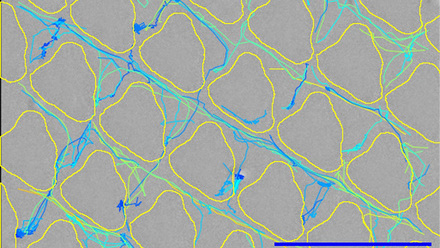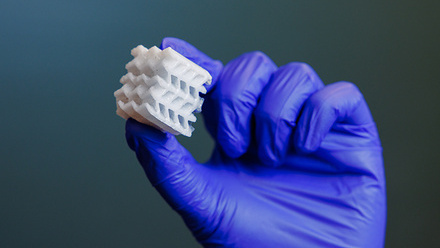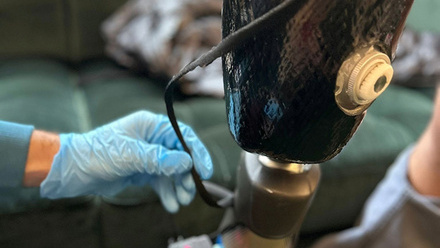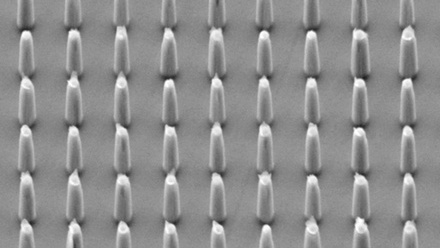Implantable ‘smart wrap’ for bladders
An implantable, integrated device that combines sensors and a polyimide polymer web to detect when a bladder needs to be emptied, could be useful for patients with underactive bladders.
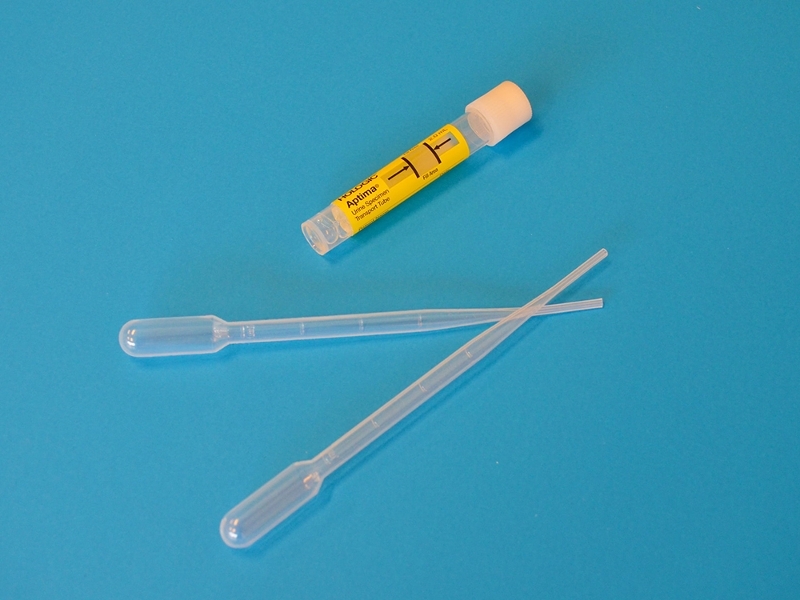
Researchers at Pennsylvania State University, USA, have developed and demonstrated the expanding electronic and optoelectronic system to monitor and stimulate the elastic urinary bladder.
The team explains that past research has focused on a mechanical aid to stress the bladder and encourage urination. However, the aid is not easy to implement and the wrap surrounding the bladder can slip off.
This work has resulted in a serpentine-shaped polymer wrap design that is said to stay in place and expands to suit the changing shape of the bladder during urination. The wrap also holds all the necessary sensors and wiring.
The device sends a signal to the polymer web with an electronic thread that expands or contracts with the bladder. The ‘smart wrap’, which fits safely and securely around the bladder, then returns to its initial formation.
According to Professor Huanyu Cheng, of the University’s Department of Engineering Science and Mechanics, the sensors on the electronic thread can measure the temperature, strain and electrophysiological signals, while micro-LEDs provide optoelectronic manipulation of the elastic bladder’s physical behaviour.
“We can monitor the dynamic variations in intravesical pressure, strain, electromyogram (EMG) and temperature among others,” he says. “With a customised algorithm, the optical stimulation can then induce urination.”
He continues, “[The serpentine design built into the structure] reduces the elastic strain and possible damage in the device and allows it to stretch or expand more than its straight counterpart. The pressure and friction at the wrap/bladder interface allows the wrap to stay in place, whereas the expansion is enabled by the serpentine in the polymer web.”
Cheng says that the device could be inserted during open chest surgery and other operations with a large opening, or through minimally invasive surgeries.
He adds, “Researchers have been interested in studying urinary control for a while because a lot of diseases and conditions are related to this. There are two conditions in particular that researchers have been studying. The first...is to force the urine out of the bladder when the muscle might be in a diseased state so that it really can’t provide enough force to get the urine out.
“The second is an overactive bladder, in which an individual experiences the sudden or frequent tendency to urinate, which is related to urinary incontinence.”
The next step is clinical studies. The team also believes the wrap could be retooled as a ‘smart heart wrap’ to help those with cardiac conditions.




